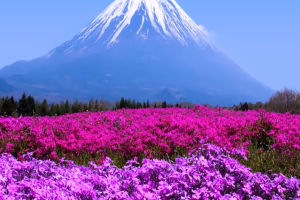Years of mass tourism have had a devastating impact on the ecosystem around the bay, and in June 2018, the Thai government announced that the area would be closed to tourists to allow nature to heal itself.
The area had been closed for more than three years before reopening on January 1 of this year. This came after a remarkable recovery of its ecosystem when Thailand's tourism industry was suffering from the severe impact of the COVID-19 pandemic.
After being closed for more than three years, tourists are now allowed to visit Maya Bay. These days, tourism in Maya Bay is not the same as it used to be. Authorities have introduced new rules to ensure the area is protected.
Reservations are now required in advance of visits, and only 375 people are allowed at a time between 7 a.m. and 6 p.m. each day. Visitors can stay in the bay for up to an hour, but swimming is no longer allowed.
In addition, boats carrying passengers to the site must dock at a designated spot behind the bay, where a long wooden walkway takes visitors to the world-famous beach. "Some visitors may feel a little sad because they can't swim, but we would tell them that even if swimming is prohibited, they can really enjoy the beauty of the place and take pictures without anyone swimming in the background," said Orani.
"That way, they also support the protection of sharks and corals in the area. So, they're fine and happy."
Maya Bay is the crown jewel of Phi Phi Island in southern Thailand. It is located in Krabi's Hat Noppharat Thara - Mu Ko Phi Phi National Park. The location was chosen to depict an isolated fictional paradise beach in Danny Boyle's 2000 film "The Beach" starring Leonardo DiCaprio.
Its breathtaking beauty has gained global notoriety and boosted mass tourism, bringing some 5,000 visitors to the bay daily, along with hundreds of boats.
Thai authorities have introduced new regulations to protect Maya Bay and its ecosystem. After its closure, Maya was transformed into a pristine bay where more than 30,000 coral colonies grow undisturbed.
Its once-crowded lagoon has been transformed into a haven for marine life. Beneath the calm, glassy waters is a new nursery for blacktip reef sharks.
At least 160 were caught in a drone flight last December, according to Thon Thamrongnawasawat, a marine scientist at Thailand's University of Agriculture who is deeply involved in the restoration of Maya Bay.
"Before Maya was closed for restoration, boats were the main problem. Many of them went into the bay. They were the main cause of sedimentation and disturbance of corals and sharks," the scientist said.
According to him, although 4,125 tourists are allowed to enter Maya Bay every day, their presence is unlikely to disturb blacktip reef sharks or corals hundreds of meters from the beach. "So if you ask us about the sea, we can say with certainty that it will continue to recover.
The reopening of Maya Bay has little to do with the restoration of the marine environment because tourists stay on land and don't bring boats into the bay or swim," he explained.
The closure and restoration of Maya Bay are part of an ecological restoration program known as the Pippi Model. It was launched by Thon in 2016 to ensure conservation and sustainable tourism on Phi Phi, which once hosted nearly 2 million visitors a year before the pandemic.
Maya Bay is the main attraction on Phi Phi Island. Its reopening has been welcomed by tour operators whose business relies heavily on boat trips to the different islands and bays. "It's exciting that Maya Bay is reopening after years of closure. It has obviously attracted tourists and gotten more people to book our tours," said Naphak Pannawitchayakun, the general manager of the tour company.
For her, tourism should go hand in hand with conservation because, without nature, there is no revenue. "Tour operators may have focused on their business in the past, just trying to attract tourists. Now they are becoming more aware that when the sea is calm, there are many marine animals," said Sasithorn Kittidhrakul, the president of the Krabi Tourism Association.
"We managed to visit it. If we can preserve it, our children and grandchildren may be able to visit it in the future. But if we lose it, it may lose the opportunity to be seen forever."


